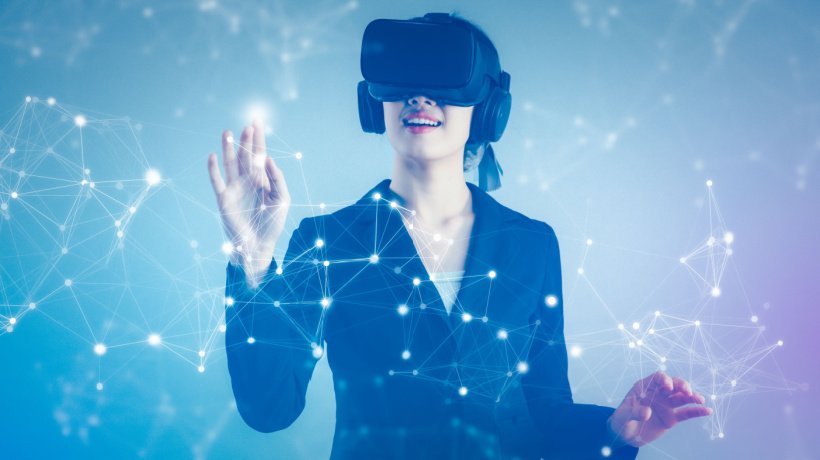The Metaverse Is Transforming Corporate Training
The metaverse, a term coined by science fiction author Neal Stephenson in his 1992 novel Snow Crash, refers to a collective virtual shared space created by the convergence of physical and digital environments. The metaverse has been a topic of interest in recent years due to the growth of Virtual and Augmented Reality technologies, which have enabled the creation of immersive virtual experiences.
In the context of corporate eLearning, the metaverse offers several potential benefits. It can provide a more engaging and immersive learning experience for employees, which can lead to better retention of information and skills. The metaverse can also provide a more efficient and cost-effective way to train employees, as it eliminates the need for physical training spaces and can be accessed remotely.
One potential application of the metaverse in corporate eLearning is the creation of virtual simulations. Virtual simulations can allow employees to practice real-world scenarios in a safe and controlled environment, which can help them develop their skills and confidence. For example, a virtual simulation could be created to train employees in customer service, allowing them to practice handling difficult customer interactions without the risk of real-world consequences.
Another potential application of the metaverse in corporate eLearning is the creation of virtual collaboration spaces. These spaces could be used to facilitate virtual meetings, team-building activities, and other collaborative learning experiences. The metaverse can provide a more immersive and interactive environment for these activities, which can help employees feel more engaged and connected.
However, there are also some potential challenges associated with the use of the metaverse in corporate eLearning. One challenge is the need for specialized skills and knowledge to create and manage virtual environments. This may require additional resources and training for organizations that are not familiar with Virtual and Augmented Reality technologies.
Another challenge is the potential for distraction and disengagement. While the metaverse can provide a more immersive and engaging learning experience, it can also be overwhelming and distracting if not designed properly. It is important for organizations to consider the needs and preferences of their employees when designing virtual learning environments.
In brief, the metaverse offers several potential benefits for corporate eLearning, including the creation of virtual simulations and collaboration spaces. However, organizations must also be aware of the potential challenges associated with the use of the metaverse and take steps to design virtual learning environments that are engaging and effective for their employees.
The Potential Of The Metaverse: Enhancing Corporate eLearning For Today's Business Environment
In today's rapidly changing business environment, corporate Learning and Development has become more important than ever. As organisations seek to stay competitive and agile, they must equip their employees with the knowledge and skills necessary to navigate new challenges and opportunities. One key tool for achieving this is eLearning, which allows employees to access educational content anytime and anywhere, at their own pace.
However, traditional eLearning methods can sometimes fall short in engaging learners and providing immersive and interactive learning experiences. This is where the metaverse comes in—a virtual world that enables users to interact with digital objects and other users in a three-dimensional environment. The metaverse offers a range of possibilities for eLearning, from simulations and virtual labs to interactive scenarios and collaborative learning activities.
In this article, I explore the potential of the metaverse in corporate eLearning. I discuss the benefits of incorporating the metaverse into eLearning programs, such as increased engagement, improved learning outcomes, and enhanced collaboration. I also examine the challenges and considerations involved in incorporating the metaverse into corporate Learning and Development, such as choosing a suitable metaverse platform and evaluating learning outcomes. By the end of this article, you will have a better understanding of the potential of the metaverse in corporate eLearning and how it can be used to create engaging and effective learning experiences for employees.
How Will The Metaverse Benefit eLearning?
The metaverse and Virtual Reality technologies have the potential to improve eLearning in several ways, but whether they will help eLearning ultimately depends on how they are implemented and used.
One potential benefit of the metaverse for eLearning is the ability to create immersive and interactive learning experiences. Virtual simulations, for example, can provide employees with hands-on practice in real-world scenarios, which can help them develop their skills and confidence. In addition, virtual collaboration spaces can provide a more engaging and interactive environment for team-building activities and other collaborative learning experiences.
Another potential benefit of the metaverse for eLearning is the ability to deliver training remotely. With Virtual and Augmented Reality technologies, employees can access training materials and participate in learning activities from anywhere with an internet connection. This can make training more flexible and convenient and can eliminate the need for physical training spaces (cost savings for the business).
However, there are also potential challenges associated with the use of the metaverse and Virtual Reality technologies in eLearning. One challenge is the need for specialized skills and knowledge to create and manage virtual environments. This may require additional resources and training for organizations that are not familiar with these technologies. In addition, the cost of developing and implementing Virtual Reality-based training programs can be high.
Another challenge is the potential for distraction and disengagement. While Virtual Reality technologies can provide immersive and engaging learning experiences, they can also be overwhelming and distracting if not designed properly. Organizations must take steps to design virtual learning environments that are engaging and effective for their employees.
Overall, whether the metaverse and Virtual Reality technologies will help eLearning will depend on how they are implemented and used. These technologies have the potential to provide more engaging and immersive learning experiences, but organizations must carefully consider the needs and preferences of their employees and invest in the necessary resources and training to ensure their success.
The metaverse offers several potential benefits for eLearning, including:
- Immersive learning experiences: The metaverse offers a highly interactive and immersive learning environment that can be tailored to meet the specific needs of learners. It can provide opportunities for learners to engage with educational content in ways that are not possible in traditional eLearning environments.
- Collaborative learning: The metaverse enables learners to work together on group projects and assignments, interact with other learners, and receive immediate feedback from instructors and peers.
- Personalised learning: The metaverse can be used to create personalised learning experiences that cater to the individual needs and learning styles of each learner. This can enhance learner engagement and motivation and improve learning outcomes.
- Simulations and virtual labs: The metaverse can be used to create simulations and virtual labs that enable learners to engage in experiential learning activities, practice real-world skills, and experiment with concepts in a safe and controlled environment.
- Gamification: The metaverse can be used to incorporate game-like elements into eLearning, such as points, badges, and leaderboards, which can increase learner engagement and motivation.
Conclusion
The metaverse offers exciting possibilities for corporate eLearning. By providing immersive and interactive learning experiences, the metaverse can increase engagement and motivation, leading to improved learning outcomes and retention. It also enables collaborative learning activities, allowing learners to work together in a virtual environment, regardless of their physical location.
However, incorporating the metaverse into corporate eLearning requires careful planning and consideration. Organizations must choose a suitable metaverse platform, design effective learning experiences that leverage the unique capabilities of the metaverse, and evaluate learning outcomes to ensure effectiveness.
As the technology behind the metaverse continues to develop and mature, it is likely to become an increasingly important tool for corporate Learning and Development. By embracing the potential of the metaverse in eLearning, organizations can create engaging and effective learning experiences that help their employees stay ahead of the curve and drive business success.
References:
- Babalola, S. S., & Alao, A. O. (2019). "Virtual reality and metaverse for corporate training programmes." International Journal of Advanced Computer Science and Applications, 10(6), 135–40.
- Bower, M. (2016). "The Potential of Virtual and Augmented Reality Technologies to Enhance Higher Education Students' Learning Experiences" Handbook of Research on Educational Communications and Technology, ed. by IGI Global, 735–45.
- Chien, C., Huang, H., & Liu, T. (2018). "The Influence of Virtual Reality on ELearning: A Case Study of Digital Learning Systems." Journal of Educational Technology Development and Exchange, 11(2), 1–14.
- Deloitte Consulting LLP. (2019). The metaverse: Bringing the virtual world to corporate learning and development.
- Dhawan, S. (2020). "Online Learning: A Panacea in the Time of COVID-19 Crisis." Journal of Educational Technology Systems, 49(1), 5–22.
- Kiryu, T., Nitta, K., & Yamamoto, G. (2021). "Augmented Reality and Virtual Reality for Education: A Literature Review." Journal of Educational Technology Development and Exchange, 14(2), 1–18.









